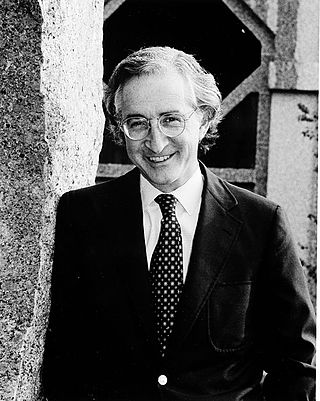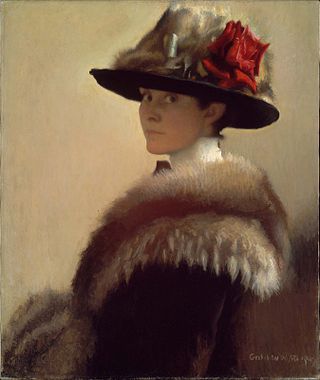Related Research Articles

The Isabella Stewart Gardner Museum is an art museum in Boston, Massachusetts, which houses significant examples of European, Asian, and American art. Its collection includes paintings, sculpture, tapestries, and decorative arts. It was founded by Isabella Stewart Gardner, whose will called for her art collection to be permanently exhibited "for the education and enjoyment of the public forever."

The School of the Museum of Fine Arts at Tufts University is the art school of Tufts University, a private research university in Boston, Massachusetts. It offers undergraduate and graduate degrees dedicated to the visual arts.

The Museum of Fine Arts is an art museum in Boston, Massachusetts, United States. It is the 20th-largest art museum in the world, measured by public gallery area. It contains 8,161 paintings and more than 450,000 works of art, making it one of the most comprehensive collections in the Americas. With more than 1.2 million visitors a year, it is the 52nd–most visited art museum in the world as of 2019.

The Peabody Essex Museum (PEM) in Salem, Massachusetts, US, is a successor to the East India Marine Society, established in 1799. It combines the collections of the former Peabody Museum of Salem and the Essex Institute. PEM is one of the oldest continuously operating museums in the United States and holds one of the major collections of Asian art in the United States. Its total holdings include about 1.3 million pieces, as well as twenty-two historic buildings.

The Virginia Museum of Fine Arts (VMFA) is an art museum in Richmond, Virginia, United States, which opened in 1936. The museum is owned and operated by the Commonwealth of Virginia. Private donations, endowments, and funds are used for the support of specific programs and all acquisition of artwork, as well as additional general support.

The Museum of Fine Arts, Houston (MFAH), is an art museum located in the Houston Museum District of Houston, Texas. With the recent completion of an eight-year campus redevelopment project, including the opening of the Nancy and Rich Kinder Building in 2020, it is the 12th largest art museum in the world based on square feet of gallery space. The permanent collection of the museum spans more than 6,000 years of history with approximately 70,000 works from six continents.

The Nagoya/Boston Museum of Fine Arts (N/BMFA) was an art museum in Nagoya, Japan, that operated from 1999 to 2018.
John W. Coffey is an American art historian and curator.
Jonathan Leo Fairbanks is an American artist and expert of American arts and antiques. Fairbanks created the American Decorative Arts and Sculpture department at the Museum of Fine Arts, Boston, and served as the Curator of the department from 1970 to 1999.
Thomas Patrick Campbell is the director and CEO of the Fine Arts Museums of San Francisco, overseeing the de Young and Legion of Honor museums. He served as the director and CEO of the Metropolitan Museum of Art between 2009 and 2017. On 30 June 2017, Campbell stepped down as director and CEO of the Metropolitan Museum of Art under pressure and accepted the Getty Foundation's Rothschild Fellowship for research and study at both the J. Paul Getty Museum in Los Angeles and at Waddesdon Manor, in the UK.

Matthew D. Teitelbaum is a Canadian art historian, who is currently the director of Museum of Fine Arts in Boston, Massachusetts.

The Boston School was a group of Boston-based painters active in the first three decades of the twentieth century. Often classified as American Impressionists, they had their own regional style, combining the painterliness of Impressionism with a more conservative approach to figure painting and a marked respect for the traditions of Western art history. Their preferred subject matter was genteel: portraits, picturesque landscapes, and young women posing in well-appointed interiors. Major influences included John Singer Sargent, Claude Monet, and Jan Vermeer. Key figures in the Boston School were Edmund C. Tarbell, Frank Weston Benson, and William McGregor Paxton, all of whom trained in Paris at the Académie Julian and later taught at the School of the Museum of Fine Arts. Their influence can still be seen in the work of some contemporary Boston-area artists.
Theodore Ellis Stebbins, Jr. is an American art historian and curator. Stebbins is currently the Consultative Curator of American Art at the Harvard Art Museums.

Milo Cleveland Beach is an American art historian and the former director of the Arthur M. Sackler Gallery and the Freer Gallery of Art.

Gretchen Woodman Rogers (1881–1967) was an American painter associated with the Boston School.
Jenelle Porter is an American art curator and author of numerous exhibition catalogs and essays about contemporary art and craft. She has curated important exhibitions that have helped studio craft to gain acceptance as fine arts. These include the exhibitions Dirt on Delight: Impulses That Form Clay at the Institute of Contemporary Art, Philadelphia in 2009 and Fiber: Sculpture 1960–Present at the Institute of Contemporary Art, Boston in 2014.
John B. Ravenal is an art historian, writer, and museum curator. Before 1998, he was the Associate Curator of 20th-Century Art at the Philadelphia Museum of Art. From 1998 to 2015 he was curator of contemporary art at the Virginia Museum of Fine Arts in Richmond, Virginia, where he organized exhibitions of Ryan McGinness: Studio Visit (2014); Xu Bing: Tobacco Project(2011), and Sally Mann: The Flesh and The Spirit (2010). He was curator of the VMFA's Jasper Johns and Edvard Munch exhibition, Jasper Johns and Edvard Munch: Love, Loss, and the Cycle of Life. His lecture about the exhibition took place in the Leslie Cheek Theater in the Virginia Museum of Fine Arts. The show opened in November 2016 in partnership with the Munch Museum in Oslo. He is the author of the exhibition catalogue Jasper Johns and Edvard Munch: Inspiration and Transformation.

Martin Barooshian was an American painter and printmaker. He is known for his ability to weave a tapestry of art historical influences with modernist elements and a contemporary sensibility. His work frequently dances the line of Surrealism and Expressionism, often with a pop and op art edge, incorporating aspects of primitive, Romantic, and Renaissance art. He has worked in a wide variety of media from miniature etchings to oversized oils on canvas. These have included woodcuts, lithographs, etchings and engravings with aquatint and soft ground, monotypes, gouache and watercolor paintings, and oils. He is also known for his technical skill and innovation.

Vanessa Platacis is an American contemporary artist, known for her large scale painting installations and her paintings and performance art. Platacis hand draws and cuts stencils that are used to paint directly onto walls using a variety of spray paint and graffiti techniques. Her work has been featured in galleries and private collections in Boston, Cambridge, Los Angeles, Miami, New Mexico, and France as well as the SCOPE Art Show in Basel, Switzerland. Currently, she lives and works on an island off the coast of Savannah, GA and teaches painting at the Savannah College of Art and Design.
Daphne Farago was an art collector and philanthropist.
References
- ↑ Edgers, Geoff (31 August 2014). "MFA's Rogers: It all Adds Up". The Boston Globe. Retrieved 21 January 2021.
- ↑ Tusa, John (2020). On Board The Insider's Guide to Surviving Life in the Boardroom. London: Bloomsbury Business. pp. 24–58. ISBN 978-1472975997.
- ↑ Museum of Fine Arts, Boston (1994). "Report of the Director". The Museum Year: Annual Report of the Museum of Fine Arts, Boston. 119: 10–11.
- ↑ "Celebrating 4th Annual FACES Honoree Malcolm Rogers in the Fenway Cultural District". The Fenway Alliance. Retrieved 20 January 2021.
- ↑ Edgers, Geoff (27 April 2008). "MFA unveiling a grander gateway to its treasures". The Boston Globe. Retrieved 20 January 2021.
- 1 2 3 4 5 6 Edgers, Geoff (12 September 2004). "Malcolm X: In 10 unorthodox years, the MFA's Malcolm Rogers has popularized, polarized". The Boston Globe. Retrieved 20 January 2021.
- ↑ Museum of Fine Arts, Boston (1996). "Report of the Director". Annual Report (Museum of Fine Arts, Boston): 4–5.
- ↑ Museum of Fine Arts, Boston (2002). "Message from the Director". Annual Report (Museum of Fine Arts, Boston): 1–8.
- ↑ "Nagoya/Boston Museum of Fine Arts". Museum of Fine Arts, Boston. Retrieved 20 January 2021.
- 1 2 3 4 Edgers, Geoff (27 February 2014). "MFA director Malcolm Rogers to retire". The Boston Globe. Retrieved 20 January 2021.
- ↑ Shea, Andrea (12 November 2010). "High Stakes For MFA's $504M Americas Wing". WBUR. Retrieved 20 January 2021.
- ↑ Hartigan, Patti (25 August 2015). "Malcolm Rogers Has Left the Building". Boston Magazine. Retrieved 20 January 2021.
- ↑ Favermann, Mark (17 September 2011). "Linde Family Wing for Contemporary Art: Museum of Fine Arts Creates Contemporary Home". Berkshire Fine Arts. Retrieved 21 January 2021.
- ↑ Smee, Sebastian (9 March 2014). "MFA has challenging task in finding new chief". The Boston Globe. Retrieved 20 January 2021.
- ↑ Museum of Fine Arts, Boston (1995–2015). "Treasurer's Report". Annual Report (Museum of Fine Arts, Boston).
- ↑ Beato, Greg (15 March 2016). "Riches on Paper for the Museum of Fine Arts, Boston". The New York Times. Retrieved 22 January 2021.
- 1 2 3 4 Gay, Malcolm (26 July 2015). "Malcolm Rogers, on the Threshold of a New Life". The Boston Globe. ProQuest 1698771382 . Retrieved 22 January 2021.
- ↑ Edgers, Geoff (28 February 2014). "MFA's Chief Ready for a Successor: Path-Setting 19-Year Director Rogers to Retire when a Replacement is found". The Boston Globe. ProQuest 1502939146 . Retrieved 22 January 2021.
- ↑ Temin, Christine (29 June 1999). "Controversial Restructuring at MFA". The Boston Globe. p. E3.
- 1 2 Dobrzynski, Judith (8 July 1999). "Boston Museum's Restructuring Sows Fear Among U.S. Curators". The New York Times. Retrieved 20 January 2021.
- ↑ Beggy, Carol (18 November 1999). "Stebbins Resigns from MFA". The Boston Globe. pp. D1.
- ↑ Diesenhouse, Susan (30 July 1998). "Arts in America; Looted or Legal? Objects Scrutinized at Boston Museum". The New York Times. Retrieved 20 January 2021.
- ↑ "Ownership Resolutions". Museum of Fine Arts, Boston. Retrieved 20 January 2021.
- ↑ "Nazi-Era Provenance Research". Museum of Fine Arts, Boston. Retrieved 20 January 2021.
- ↑ Healy, Beth (24 January 2015). "Leading nonprofit jobs hold big perks". The Boston Globe. Retrieved 20 January 2021.
- ↑ "Founders and Benefactors". Museum of Fine Arts, Boston. Retrieved 20 January 2021.
- ↑ Seal, Mark (April 2020). "The Prince, the Flash, and the Forger". Vanity Fair (716).
- ↑ Adam, Georgina; Hollingsworth, Mark (October 2022). "An issue of attribution". The Art Newspaper . 31 (349): 1, 17.
- ↑ Engstrom, Peter A. (2010). Francis Davis Millet: A Titanic Life. East Bridgewater, MA: Miller Studio Pub. pp. 86–87, 126, 145, 279.
- ↑ Nicholson, Louise (December 2009). "Personality of the Year: Malcolm Rogers". Apollo. 170 (571): 24.
- ↑ "Awards in Italian Culture 2010: American Award to Malcolm Rogers". Foundation for Italian Art and Culture. Retrieved 9 February 2021.
- ↑ "Malcolm Rogers: Humanitas Visiting Professorship in Museums, Galleries and Libraries (2011–2012)". Weidenfeld Hoffman Trust. Retrieved 9 February 2021.
- ↑ Lambert, Elizabeth (1995). "The Art of Collecting: A Museum Director's Apartment". Architectural Digest. 52 (1): 132–137.
- ↑ Brinkley, Rob (30 April 2012). "All is Calm". New England Home. Retrieved 20 January 2021.